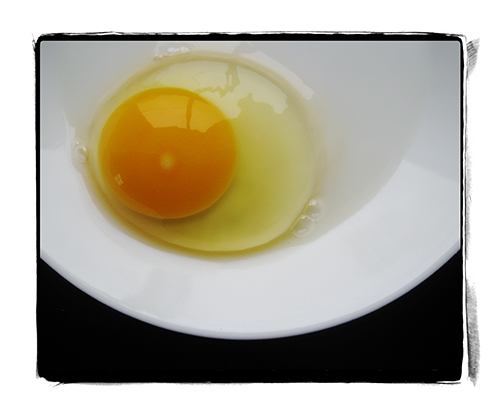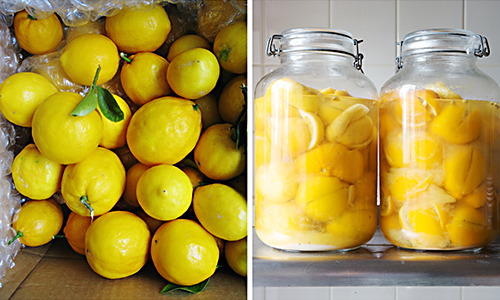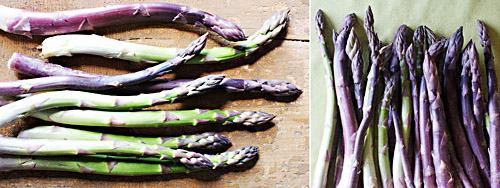Happy Healthy Chickens Lay Delicious Eggs
I love eggs. Over the years I’ve eaten lots of them. For most of my life, the garden variety, supermarket white variety was good enough for me. But it was when my little son, Henry, started eating eggs that I began to pay attention to all of the different types available—brown, white, organic, free-range, cage-free, and certified-humane. I’ve tried them all, and while I did understand and support the ethics of raising animals humanely, all these eggs tasted the same to me. How could they taste the same when they were raised differently?
Then one day, while shopping at Whole Foods, I came across eggs labeled “pastured eggs”. Turns out pastured eggs, sometimes labeled “pasture-raised eggs” or “pasture-raised chickens”, are laid by chickens allowed to roam freely outside, with lots of sunshine and the wide open sky over their heads. They peck at bugs, worms, and grass and do what chickens do naturally. While free-range birds have access to the outside, conditions are often such that they never venture out the tiny door that leads them there. The important word to look for is “pasture”. I know my local farmers market (and most likely yours, too) carries pastured eggs, but I don’t always have time to get there so it was nice to see these exceptional eggs available at the supermarket.
I picked up a dozen on that day, and when I cracked the first one open, whoa! The yolk was perky and orange (!) and the white was high and tight. On appearance alone it stood out from every egg I ever seen. And the shells were much sturdier than the thin, crumbly supermarket eggs I was used to. I pierced the yolk with the tines of a fork and noticed how thick and sticky it was. I beat the egg, poured it into the puddle of melted butter in my skillet and cooked it just the way my son likes. A little salt and a little pepper, then I slid the egg onto his plate alongside a link of sausage, a shingle of toast, and breakfast was ready. My son came running into the kitchen, climbed up into his seat and looked down. He opened his eyes wide, “This egg is bright!” I smiled, so pleased that he noticed. “Now that’s an egg, huh?” I said. Makes sense that happy healthy chickens lay delicious healthy eggs.—Julia Lee
Lunch for the creative crew
from Williams–Sonoma
Spring Sorrel Soup
Poached Wild Salmon with a “Sauce” of Peas, Bacon, and Chives
Young Leaves, Fresh Herbs, and Wild Violets with Lemon and Olive Oil
A Very Ripe French Brie and Crunchy Bread
Strong Coffee and Cookies
The other day the creative crew from Williams-Sonoma came for lunch. It was a beautiful sunny spring day with a blue sky full of big puffy clouds. Thank heavens there was still enough of a chill in the air so we could justify building a fire in the wood-burning stove—a fire always seems to cheer and cozy the whole place up. So we had the best of both seasons that day.
We made a special lunch in their honor and had a wonderful time before they had to run off and jump on a plane back to San Francisco. We talked about all kinds of things but they must have really been listening when we spoke of our love of Meyer lemons. They told us of lemon trees laden with fruit right in their backyards—Oh California! A few days later a big bulging box arrived at the studio. They had picked a pile of Meyer lemons from their trees and sent the mother lode to us as a thank you present for lunch. Now that was the Thank You “Note” of all times in our book.
Here’s how we preserved the lemons and along with them the memory of the day and their lovely gift.
PRESERVED LEMONS
Everyone needs a few culinary tricks up their sleeve—or, better yet, in their refrigerator. If you live in a metropolitan area with lots of ethnic shops, you’ll be able to find these lemons already cured. Living far from those stores, we make our own—big jars of them that last us throughout the year. And it is so well worth it. These golden treasures are money in the bank as their deep salty-sour flavor can brighten up practically any dish. Actually, we have to restrain ourselves from using them in just about everything.
We like to use Meyer lemons, a sweet, thin-skinned variety (most likely a cross between a mandarin orange and a true lemon). You’ll find them in the market from fall through spring. But any variety of lemon will do. In fact, a thicker-skinned lemon is the traditional choice in Morocco, where this pickling method originated.
Preserved lemons are typically rinsed before they are added to stews, tagines, soups, and couscous dishes. Only the rind is used and the pulpy flesh gets discarded. When our own preserved lemons are still new (aged between one month and about six months), we use both rind and flesh, not even bothering to rinse the lemons. The salty brine softens the rind until it is almost translucent and makes the flesh plump and supple. The longer the lemons cure, the saltier they get, so taste them first to decide how you will cook with them. Preserved lemons will last up to 1 year in the fridge.
Lemons, washed
Kosher salt
Sterilized wide-mouth container with a tight-fitting lid
Cut the lemons (almost all the way through) into quarters, keeping them attached at the stem end. Working over a bowl, tamp the inside of each lemon with salt. Tightly pack the salt-filled lemons into the sterilized container. Pour more salt over the lemons as you fill the container. Cover the salt-packed lemons with freshly squeezed lemon juice.
Store in the refrigerator. Turn the container occasionally for the first few weeks to moisten all the lemons with the ever-accumulating salty brine. The lemons should eventually become submerged in this brine. If the brine doesn’t completely cover them after a month, use a metal kitchen spoon to gently press the lemons under the surface.
Recipe from Canal House Cooking, Volume N° 1
Asparagus with Irish Butter
Local asparagus arrived a few weeks ago. Big fat green spears, of course, and a deep reddish purple variety called Viola. The first site of them at a local farm market, standing tall and bending—all wild-looking, loose in their buckets of water—took our breath away. Spring had arrived!
So early this year, as we do each Spring, we’ve begun feasting on these local zaftig beauties and much prefer them to the straight thin asparagus that you find in the supermarket. We take the extra time and trouble and always peel off their skin with a vegetable peeler to just below the tip not only to pretty-up the spears and make them more tender, but especially to rid them of the fine sand lodged in those small flat leaves along the spear that look like fins. This year, we’ve been eating our asparagus bathed in a luxurious lemony butter sauce, similar to a hollandaise, but better—fresher tasting, not so cloyingly thick. We first learned how delicious it was at Ballymaloe with Darina Allen—the high priestess of Irish cuisine. It relies on the salted Irish butter we’re so crazy about from Kerrygold—but other brands of European-style high-fat butter will suit. Here’s a preview of the recipe that will be in Canal House Cooking Volume N°4.
It is quite simple and it goes a little something like this: Whisk 2 egg yolks together with 2 tablespoons of water in a heavy saucepan. Begin warming the beaten yolks over very low heat, whisking all the while. Then gradually add 8 tablespoons of cold salted Irish butter, 1 tablespoon at a time, whisking until each tablespoon of butter has been incorporated into the sauce before you add the next. The sauce will thicken and lighten, becoming almost foamy. Take the pan off the heat and whisk in more or less the juice of half a lemon to your own taste. This sauce isn’t as finicky as most delicate butter sauces. We keep it warm over a pot of hot water.
Maybe you’ll want to honor your asparagus with this deliciousness, too.




